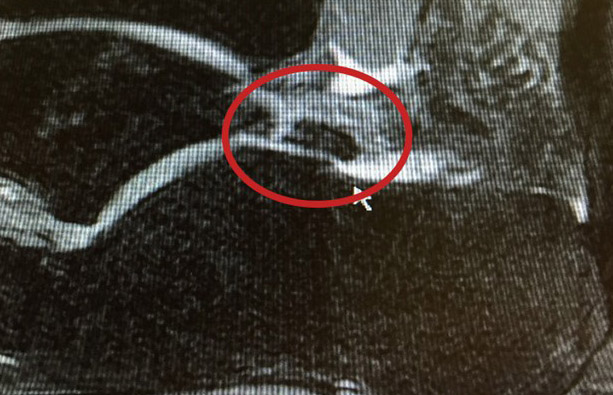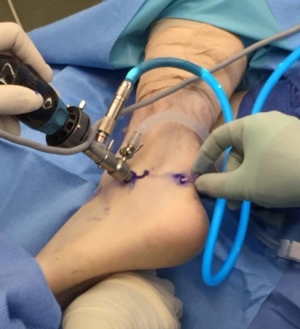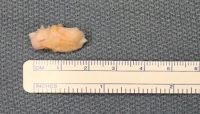When the back of the ankle hurts
- Posted On:
- Written By: Dr. Robert Grunfeld

Do you have pain in the back of your ankle when walking, or pointing the toes? Do you play sports, and notice that you have pain when kicking a ball or jumping? Does your ankle swell and cause pain? Is the back of the ankle tender to the touch? If so, you may want to talk to an orthopedic surgeon about os trigonum syndrome.
The os trigonum is a bony point of the posterolateral talus—meaning it’s an extra bone fragment, or bone spur, that sits on the back of the ankle near the heel bone that can cause pain and irritation with activity. This occurs in approximately 10-25% of the population. In most of us, this part of the ankle fuses together when we are between the ages of 8 and 13 years old. However, sometimes it does not fuse. We also see this in the form of a stress fracture or after an injury, where the foot is plantarflexed—toes and ankle pointed down toward the floor.
Most often people don’t have symptoms, but over time or with injury it can cause discomfort and pain. Originally described in dancers, here in Wyoming, I see this most commonly in oil rig workers, construction workers, coal miners and other demanding, very physical jobs.

Diagnosis of os trigonum syndrome begins with a thorough history and examination of the foot and ankle at Wyoming Orthopedics & Spine, complete with X-rays. To confirm the diagnosis, an MRI is usually ordered. The X-ray will show the bony spur (os trigonum) or help distinguish it from a fractured talus bone in the foot. The MRI can identify a tear in the fibrous tissue, or a stress fracture of the os—it will light up in a white color, indicating that there is irritation at the os trigonum.
Treatment usually begins with simple steps: rest, ice, non-steroidal anti-inflammatory medications, physical therapy and/or a walking boot to restrict painful ankle movement—in children, we often start with casting to decrease the inflammation. Physical therapy has helped many of my patients out and they have been able to avoid surgery.
If rest and activity modifications fail to relieve the symptoms, a surgery can be considered to remove the abnormal bone in the back of the ankle.
 I will perform a subtalar arthroscopy and os trigonum excision. This involves placing a camera inside the subtalar joint and shaving the scar tissue on the posterior joint and removing the loose bony fragment (os trigonum). This is an outpatient surgery and I let my patients be fully weightbearing in a boot after surgery. Physical therapy can often be helpful in the recovery phase and sutures will be removed between two to four weeks. Patients can often return to normal activity after four to six weeks of treatments, as long as ankle movements are no longer painful.
I will perform a subtalar arthroscopy and os trigonum excision. This involves placing a camera inside the subtalar joint and shaving the scar tissue on the posterior joint and removing the loose bony fragment (os trigonum). This is an outpatient surgery and I let my patients be fully weightbearing in a boot after surgery. Physical therapy can often be helpful in the recovery phase and sutures will be removed between two to four weeks. Patients can often return to normal activity after four to six weeks of treatments, as long as ankle movements are no longer painful.

